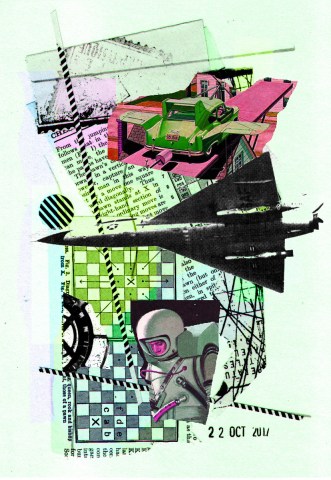On Feb. 5, the annual Undergraduate Project Symposium will return for its sixth year of showcasing student research, but this time, there will be a special focus on a category for Indigenous ways of knowing.
This year, the UPS is working to increase inclusivity for submissions that might not fall into the traditional forms of research, like Indigenousknowledge- based research or fine arts. The symposium also gives students a special incentive to submit their work, as the organizers have secured more funding for prizes.
The UPS is an event coordinated by the University of Saskatchewan Students’ Union, the Undergraduate Research Initiative, the Gwenna Moss Centre for Teaching and Learning, and various others, all part of the organizational committee. Jessica Quan, USSU vice-president academic affairs, discusses the value of including a new category on Indigenous ways of knowing and Indigenous- based research.

“With the university’s efforts to Indigenize, it is incredibly fitting. We have so many Indigenous undergraduate scholars, so I think it’s important to recognize their work,” Quan said. “I am also pleased to see so many submissions [for] this category and this criteria.”
Quan says she has been working to highlight Indigenous- based research that has already been taking place on campus by recognizing it through the UPS.
Quan, with a goal to increase community engagement, has also been working to expand the prizes available for students by reaching out to various colleges, offices on campus and community stakeholders, including the City of Saskatoon Mayor’s Office and the Remai Modern Art Gallery, who have agreed to fund awards for student submissions.
“The Remai Modern and the U of S have signed a Memorandum of Understanding, agreeing that they are going to work together to support students for experiential learning [and] art students. I found it fitting to have this award,” Quan said.
In addition to the Mayor’s Office and the Remai Modern, Jacqueline Ottman, vice-provost, Indigenous engagement, at the U of S, has agreed to fund $200 for a prize in the new category and will attend the symposium to connect with students.
The UPS committee is working to equip the judges with the skills needed to evaluate artwork alongside scientific research by identifying the calibre of both endeavours within their own fields. Quan explains that she hopes this will encourage more fine arts students to have their work valued in general.
“Historically, with undergraduate project symposiums — and I think this speaks to a larger trend at the university — art students tend to be devalued or they aren’t held to the same standard or level as our science students,” Quan said. “But, basically, I want to — this year — change the symposium to be more accomodating for our arts students.”
Until Dec. 31, students were able to submit their work, including an outline of theses and data for research projects. Applicants will be invited to present their work to the public on Feb. 5 from 11 a.m. to 3 p.m. in the North Concourse of Place Riel.
The USSU will cover the printing costs of posters that detail research methodologies for any students who submit their work to the UPS. While a poster presentation is the most common form of submission, Quan encourages students to submit research in all forms, including projects completed long before the symposium.
“You don’t have to create an original project strictly for the symposium. You can literally take a project that you’ve done,” Quan said. “If you want to take the project [to] a new level, you can take anything you’ve done in the past and submit it to the symposium.”
—
Nykole King / News Editor
Graphic: kcw1939 / Flickr